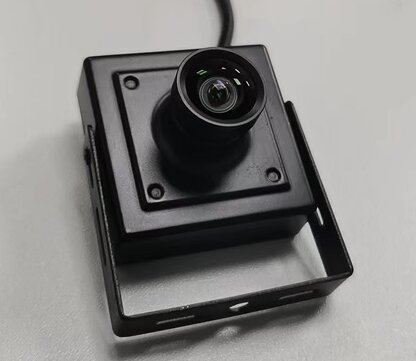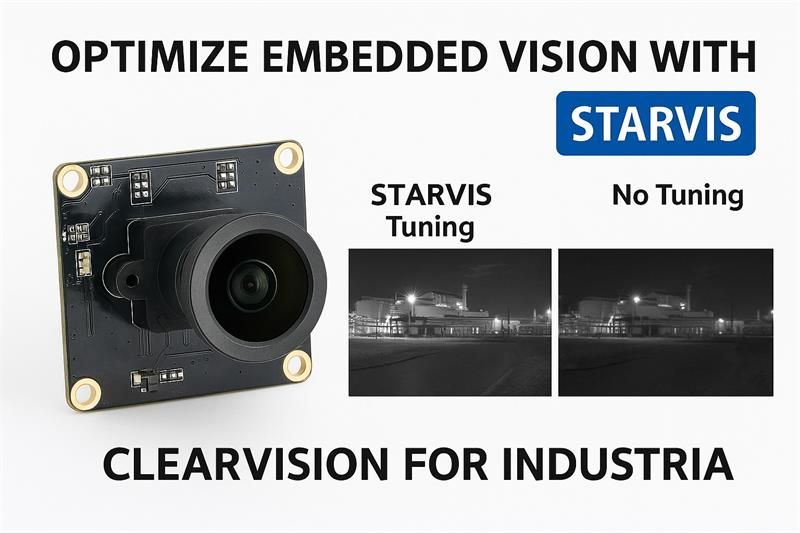Maximizing Your Embedded Vision System’s Performance with STARVIS Sensor Tuning
Introduction: Why Sensor Tuning Matters
In an embedded vision system, the image sensor is the core component that determines how well the system perceives and processes the environment. While hardware selection is critical, sensor tuning — the careful adjustment of gain, exposure, white balance, gamma, and other parameters — can dramatically improve real-world performance.
For applications like industrial inspection, robotics, medical imaging, or security monitoring, the Sony STARVIS family of CMOS sensors offers exceptional low-light sensitivity, dynamic range, and color accuracy. When paired with our Novel STARVIS USB camera modules — including the IMX291, IMX335, IMX415, and IMX385 — proper tuning can help you achieve the perfect balance between clarity, speed, and reliability.
1. Understand the Capabilities of STARVIS Sensors
Sony STARVIS sensors are designed for starlight-level imaging, capturing full-color video in conditions as low as 0.001 lux. Each sensor in the STARVIS lineup has unique strengths:
- IMX291 – Excellent low-light performance with 2MP resolution, ideal for night vision robotics or surveillance.
- IMX335 – 5MP high-resolution sensor with great low-light capability for precision inspection.
- IMX415 – 8MP sensor with ultra-low noise and wide field-of-view for high-end embedded systems.
- IMX385 – Large pixel size for extreme low-light sensitivity, perfect for security and machine vision in challenging lighting.

2. Optimize Exposure and Gain Settings
Goal: Maintain brightness without introducing noise.
- In low-light environments, increase analog gain moderately and use longer exposure, but avoid motion blur.
- In dynamic scenes, use shorter exposure times and balance with digital gain to preserve sharpness.
- Test with your actual lighting — factory floor lighting, night-time warehouse conditions, or laboratory settings — to determine the optimal parameters.
3. Leverage Wide Dynamic Range (WDR/HDR)
Many STARVIS sensors support hardware HDR/WDR, allowing clear imaging in mixed-light scenarios.
- Factory inspection: Capture both bright reflective surfaces and shadowed components.
- Outdoor robotics: Balance bright sunlight and shaded areas without losing detail.
Our USB modules offer direct control of WDR via UVC or SDK commands, making on-the-fly adjustments possible.
4. Fine-Tune White Balance and Color Reproduction
In industrial or medical vision, color accuracy is critical:
- Use manual white balance in consistent lighting environments for stable results.
- In variable lighting (e.g., mobile robotics), enable auto white balance but limit its adjustment range to avoid sudden shifts.
- For NIR-assisted imaging, adjust color matrices to maintain realistic tones.
5. Optimize Frame Rate for Your Application
- High-speed robotics/inspection: Choose 60fps (or higher if supported) for smooth tracking and reduced motion blur.
- Static inspection: Use lower frame rates with higher exposure for improved low-light clarity.
- Our STARVIS USB modules (IMX291, IMX335, IMX415, IMX385) allow flexible FPS control over USB 3.0 without complex firmware changes.
6. Reduce System Latency
In real-time applications like robotic guidance or autonomous navigation, latency can make the difference between success and failure.
- Use USB 3.0 STARVIS modules to transmit uncompressed frames.
- Avoid unnecessary image scaling or post-processing in the camera if the host system handles it faster.
7. Application Examples with Proper STARVIS Tuning
Industrial Inspection (IMX335)
- Detect micro-defects on PCBs under LED lighting with optimized exposure/WDR settings.
Low-Light Security (IMX385)
- Maintain full-color surveillance in near-total darkness using moderate gain and noise reduction.
Robotics Navigation (IMX291)
- Balance frame rate and low-light clarity for AGV/AMR navigation in dim warehouses.
High-End Embedded Vision (IMX415)
- Capture 8MP detail at 30–60fps for object recognition in advanced automation systems.

8. Typical U.S. Industrial Cases Using STARVIS USB Cameras
Texas – Oil & Gas Refinery Monitoring (IMX385)
- In a Houston-based refinery, STARVIS IMX385 USB cameras are used for night-time monitoring of high-pressure valve areas. With WDR enabled and gain fine-tuned, the system captures clear video in areas lit only by minimal safety lighting, enabling predictive maintenance teams to spot leaks or vapor emissions before they escalate.
Florida – Port Container Yard Automation (IMX415)
- At the Port of Miami, automated container stacking cranes rely on STARVIS IMX415 USB cameras for 8MP wide-field imaging, ensuring precise container alignment even under mixed daylight and shadow from large gantry structures. HDR tuning eliminates glare from reflective surfaces and maintains barcode readability in all conditions.
Great Lakes Region – Steel Mill Equipment Inspection (IMX335)
- In a Cleveland steel mill, STARVIS IMX335 cameras are integrated into automated inspection gantries above rolling lines. With optimized exposure, they capture both the glowing hot steel sheets and darker surrounding machinery in one frame, helping detect surface defects at production speeds exceeding 10 m/s.
Conclusion
STARVIS sensors already provide industry-leading imaging performance, but with the right tuning strategy, your embedded vision system can achieve even greater clarity, accuracy, and efficiency.
At Shenzhen Novel Electronics Limited, our STARVIS USB camera modules — featuring IMX291, IMX335, IMX415, and IMX385 — come with tuning support and integration guidance, helping you optimize performance for your exact use case.
Request a Sample or Expert Tuning Consultation
- Email: office@okgoobuy.com
- Website: www.okgoobuy.com
- Product Page: STARVIS USB Camera Modules


